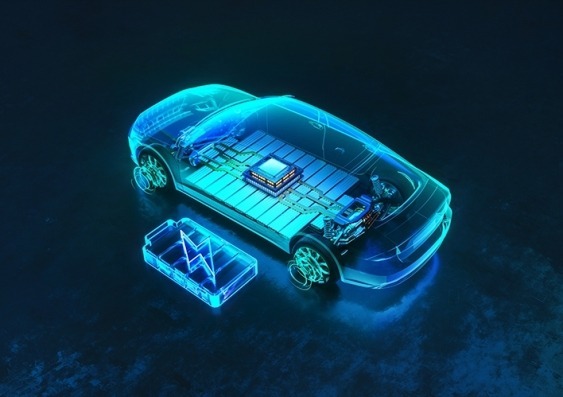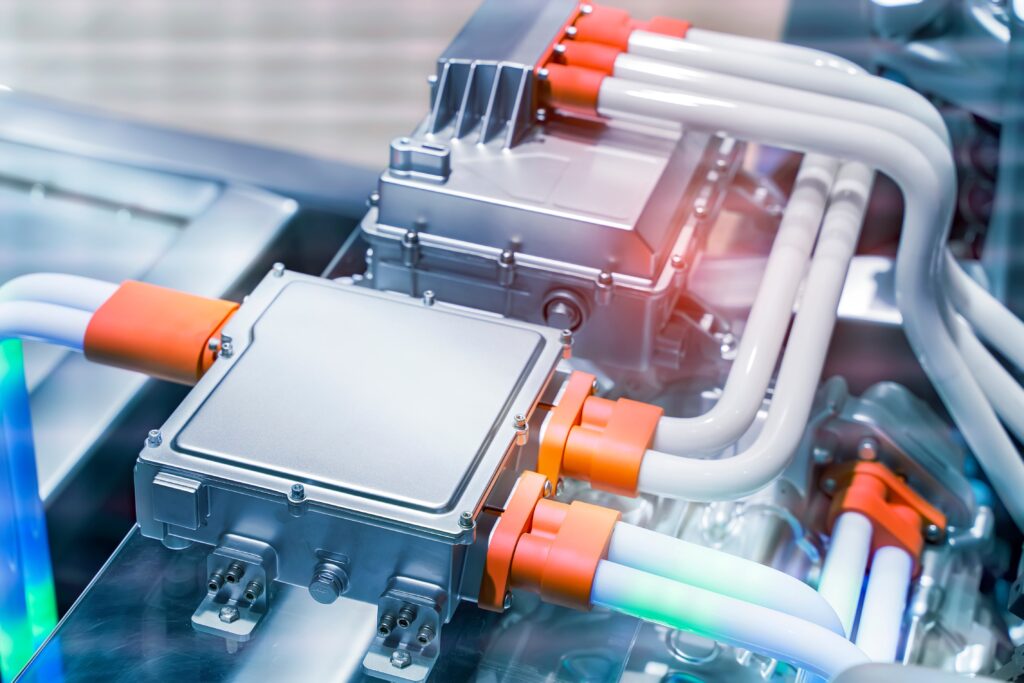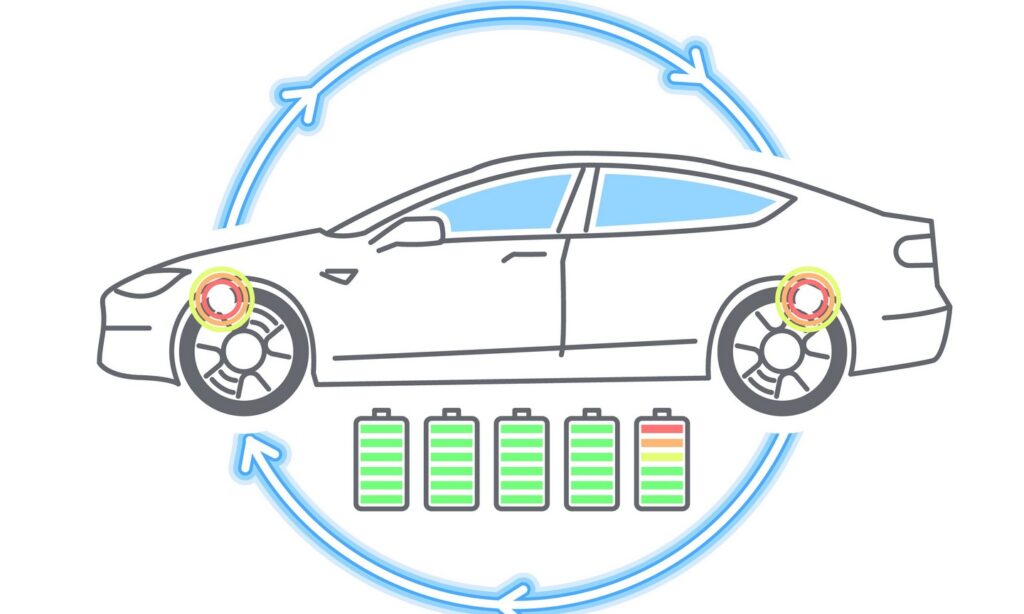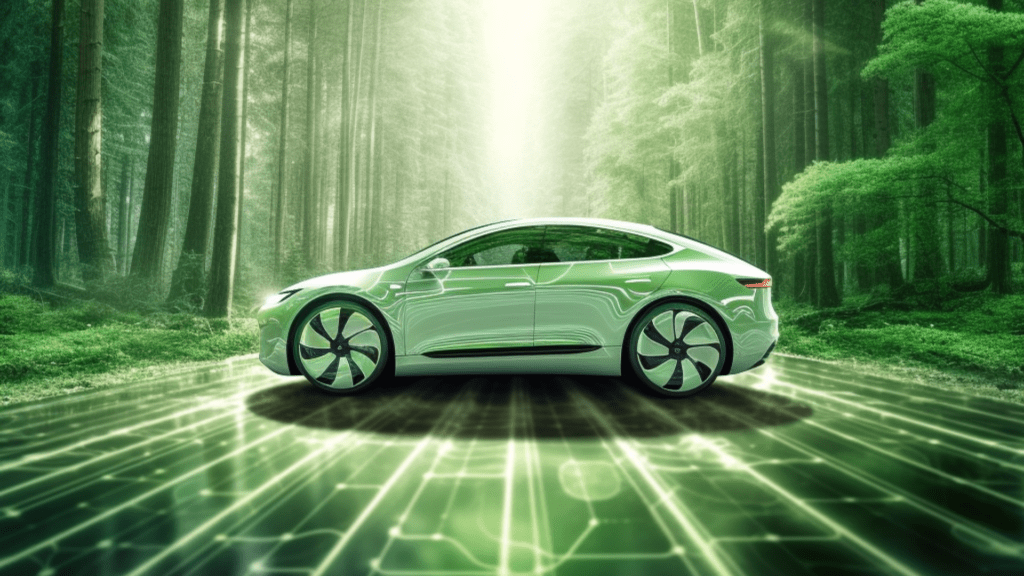The transportation sector is a significant contributor to global energy consumption and air pollution. Enter electric vehicles (EVs), a revolutionary technology poised to reshape our world. But how exactly do EVs reduce consumption and enhance sustainability? Let’s delve into the key benefits:
1. Reduced Reliance on Fossil Fuels: A Deeper Dive
The dependence on fossil fuels for transportation poses a significant double threat: environmental damage and resource depletion. Here’s a closer look at how EVs address these issues:
- Curbing Greenhouse Gas Emissions: Fossil fuel combustion releases a significant amount of carbon dioxide (CO2) and other greenhouse gases, trapping heat in the atmosphere and contributing to climate change. By eliminating tailpipe emissions, EVs directly address this problem. While the electricity generation process itself might emit greenhouse gases, the focus can be shifted towards cleaner sources like solar, wind, and hydro power, leading to a net reduction in emissions.
- Breaking Free from Finite Resources: Oil is a finite resource, and its extraction and refinement have significant environmental consequences. As global demand for oil continues to rise, EVs offer a long-term solution by reducing our dependence on this dwindling resource.
- Geopolitical Implications: Reliance on foreign oil can create dependence on certain countries and contribute to geopolitical tensions. EVs have the potential to lessen this dependence, fostering energy independence and a more stable global landscape.

The impact of EVs extends beyond just tailpipe emissions. The entire lifecycle of a gasoline vehicle, from extraction and refining of oil to manufacturing, transportation, and disposal, contributes to environmental burdens. While EVs also have environmental impacts associated with battery production and disposal, ongoing research is focused on minimizing these footprints and developing sustainable practices throughout the EV lifecycle.
2. Unveiling the Efficiency Edge: How Electric Vehicles Maximize Energy Use
Electric vehicles (EVs) boast a significant advantage over traditional gasoline-powered vehicles when it comes to energy efficiency. Here’s a breakdown of the key factors contributing to this edge:
- Goodbye, Wasted Heat: Internal combustion engines in gasoline vehicles are notoriously inefficient. A significant portion of the energy stored in gasoline is lost as heat during the combustion process. This wasted energy translates to lower fuel economy and a shorter driving range.
- Electric Motors: Champions of Efficiency: Electric motors, the heart of EVs, are significantly more efficient at converting energy into motion. They achieve this by using electricity directly to power the rotation of the wheels, minimizing energy loss in the form of heat.
- Regenerative Braking: Capturing Lost Energy: Traditional braking systems convert the kinetic energy of a moving vehicle into heat through friction. This wasted energy disappears entirely. EVs utilize regenerative braking, a game-changing technology. When the driver applies the brakes, the electric motor acts as a generator, capturing the kinetic energy and converting it back into electricity. This captured energy is then stored in the battery, extending the vehicle’s driving range.
- Reduced Idling Losses: Gasoline vehicles waste fuel while idling at traffic lights or in stop-and-go traffic. The engine continues to run and consume fuel even when the vehicle isn’t moving. EVs, on the other hand, completely shut down the electric motor when stationary, eliminating idling losses and maximizing energy efficiency, especially in urban environments with frequent stops.
The Efficiency Equation: Real-World Impact
These factors combine to deliver significant benefits for EV owners:
- Increased Driving Range: With less energy wasted, EVs can achieve a longer driving range on a single charge compared to a gasoline vehicle with a full tank. This translates to fewer trips to the gas station (or charging station) and increased convenience.
- Lower Operating Costs: The improved energy efficiency of EVs translates to lower energy consumption and potentially lower fuel costs (electricity compared to gasoline).
- Environmental Benefits: By maximizing energy use and minimizing waste, EVs contribute to a cleaner environment by reducing greenhouse gas emissions and air pollution associated with traditional gasoline vehicles.
The Road to Further Efficiency
The quest for even greater efficiency in EVs is an ongoing process. Here are some areas of ongoing development:
- Battery Technology: Research is focused on developing batteries with higher energy density, allowing for longer driving ranges and shorter charging times.
- Aerodynamic Design: Optimizing vehicle aerodynamics can further reduce energy consumption by minimizing wind resistance.
- Lightweight Materials: Utilizing lightweight materials in EV construction can decrease overall vehicle weight, leading to improved efficiency.
As these advancements unfold, electric vehicles are poised to become even more efficient and attractive to consumers, accelerating the transition towards a more sustainable transportation future.

3. Regenerative Braking: Rethinking How We Slow Down and Power Up
Electric vehicles (EVs) go beyond simply replacing the gasoline engine. They introduce innovative technologies like regenerative braking, a game-changer in terms of energy efficiency and range extension. Let’s delve deeper into this remarkable feature:
- The Science Behind It: Unlike traditional brakes that rely on friction to slow down a vehicle, regenerative braking in EVs utilizes the electric motor as a generator. When the driver applies the brakes, the electric motor’s rotation is resisted, converting the car’s kinetic energy (the energy of motion) into electricity.
- Capturing Lost Energy: In a traditional car, the kinetic energy dissipated as heat during braking is wasted entirely. Regenerative braking harnesses this lost energy, transforming it into usable electricity that is then stored back in the battery pack. This captured energy can then be used to power the electric motor and propel the vehicle forward.
- Multiple Benefits: Regenerative braking offers a multitude of advantages:
- Increased Range: By recapturing energy that would otherwise be lost, regenerative braking significantly extends the driving range of an EV on a single charge. This translates to fewer charging stops and a more convenient driving experience.
- Improved Efficiency: Regenerative braking maximizes energy use by putting wasted energy back to work. This translates to lower overall energy consumption and potentially reduced operating costs for EV owners.
- Reduced Brake Wear: Since regenerative braking lessens reliance on traditional friction brakes, it reduces wear and tear on the braking system, potentially extending the lifespan of brake pads and rotors and lowering maintenance costs.
- Regenerative Levels and Driver Control: Some EVs allow drivers to choose the intensity of regenerative braking through paddles or buttons on the steering wheel. This enables drivers to adjust the braking feel and the amount of energy recovered based on driving conditions and preferences. For example, higher regenerative braking settings can be ideal for stop-and-go city traffic, maximizing energy capture during frequent braking, while lower settings might be preferred for highway driving.
- The Future of Regenerative Braking: Research and development in regenerative braking are ongoing. Here are some areas of exploration:
- Improved Efficiency: Optimizing the regenerative braking system to capture even more kinetic energy and minimize energy losses during conversion is a key focus.
- Vehicle-to-Grid Integration: Future advancements might enable EVs to not only capture energy during braking but also potentially feed excess electricity back into the power grid during times of low demand.

4. Streamlined Maintenance: Fewer Headaches, More Miles for Electric Vehicles
Electric vehicles (EVs) offer a refreshing departure from the world of frequent oil changes, spark plug replacements, and exhaust system repairs. Let’s explore why EVs boast significantly reduced maintenance needs compared to traditional gasoline-powered vehicles:
- Simpler Powertrain: At the heart of the difference lies the powertrain. Gasoline vehicles have complex internal combustion engines with numerous moving parts like pistons, valves, and camshafts. These parts experience friction and wear over time, necessitating regular maintenance and replacements. EVs, on the other hand, utilize electric motors with significantly fewer moving parts. This translates to less wear and tear, reducing the frequency and complexity of required maintenance.
- No Fluid Management: Traditional gasoline vehicles require a variety of fluids like engine oil, transmission fluid, and coolant to function properly. These fluids need to be changed or topped up periodically to maintain optimal performance. EVs eliminate the need for these fluids, simplifying maintenance and reducing associated costs.
- Regenerative Braking Saves Brakes: As discussed earlier, regenerative braking in EVs reduces reliance on traditional friction brakes. This translates to less wear and tear on brake pads and rotors, extending their lifespan and potentially delaying the need for replacements.
- Remote Diagnostics and Software Updates: Modern EVs are equipped with sophisticated onboard computers that can monitor system performance and identify potential issues early on. In many cases, these issues can be diagnosed remotely by technicians, allowing for proactive maintenance and preventing breakdowns. Furthermore, software updates can be delivered wirelessly, eliminating the need for physical visits to service centers for routine software upgrades.
Benefits Beyond Convenience:
Reduced maintenance in EVs goes beyond just saving time and money for owners. Here’s how it contributes to a broader positive impact:
- Reduced Environmental Impact: Manufacturing and replacing parts for traditional vehicles require resources and energy. The reduced need for maintenance in EVs translates to a lower environmental footprint associated with vehicle ownership.
- Increased Uptime: With fewer scheduled maintenance appointments and a lower risk of unexpected breakdowns, EVs offer increased uptime, keeping owners on the road and minimizing disruptions.
It’s Important to Note:
While EVs require less maintenance overall, they still have certain service needs. These may include:
- Battery health checks: Regular monitoring of battery health is crucial to maintain optimal performance and range.
- Tire rotations and alignments: Just like any vehicle, EVs require regular tire maintenance for safety and optimal performance.
- Cabin air filter replacements: These filters help maintain air quality inside the cabin and should be replaced periodically.

5. Breathing Easy: How Electric Vehicles Purify the Air We Breathe
Transportation emissions are a major culprit behind air pollution, a significant threat to public health and environmental well-being. Enter electric vehicles (EVs), offering a breath of fresh air (literally) by eliminating tailpipe emissions and fostering cleaner air quality. Here’s a deeper look at how EVs contribute to a healthier environment:
- Eliminating Tailpipe Pollutants: Traditional gasoline-powered vehicles emit a cocktail of harmful pollutants through their tailpipes, including nitrogen oxides (NOx), particulate matter (PM), and volatile organic compounds (VOCs). These pollutants contribute to smog formation, respiratory problems, and other health issues. EVs, on the other hand, produce zero tailpipe emissions, significantly reducing these harmful pollutants in the air we breathe.
- Improved Respiratory Health: Air pollution from vehicle emissions is linked to a range of respiratory problems, including asthma, chronic obstructive pulmonary disease (COPD), and lung cancer. By reducing these emissions, EVs can lead to improved respiratory health for individuals and communities, especially in urban areas with high traffic congestion.
- Reduced Cardiovascular Issues: Air pollution can also exacerbate cardiovascular problems like heart disease and stroke. The cleaner air fostered by EVs can contribute to a lower risk of these cardiovascular issues, leading to a healthier population.
- Benefits Beyond Cities: The positive impact of EVs extends beyond densely populated urban areas. Pollution from transportation can travel long distances, impacting air quality even in rural regions. The widespread adoption of EVs can lead to cleaner air across the board, regardless of location.
A Ripple Effect of Positive Change:
The benefits of cleaner air extend far beyond human health. Here’s how EVs contribute to a healthier environment:
- Reduced Acid Rain: Nitrogen oxides (NOx) from vehicle emissions contribute to acid rain, which damages forests, aquatic ecosystems, and historical buildings. By eliminating NOx emissions, EVs can help mitigate acid rain and protect these vital environmental resources.
- Combating Climate Change: Transportation is a major contributor to greenhouse gas emissions, a key driver of climate change. While the electricity generation process for charging EVs might still emit greenhouse gases, the shift away from fossil fuels promotes the development and adoption of renewable energy sources like solar, wind, and hydro power. This can lead to a net reduction in greenhouse gas emissions and a slower pace of climate change.

Challenges and the Road Ahead:
- Renewable Energy Integration: To maximize the environmental benefits of EVs, a robust and clean energy infrastructure is crucial. Investing in renewable energy sources and expanding the charging infrastructure powered by clean energy are key aspects of creating a truly sustainable transportation ecosystem.
- Battery Production and Disposal: While EVs significantly reduce emissions during operation, there are environmental considerations associated with battery production and disposal. Ongoing research focuses on developing sustainable battery production methods and responsible recycling practices to minimize the environmental footprint throughout the entire EV lifecycle.
Energy Diversification: Electric vehicles contribute to diversifying the energy mix in the transportation sector, reducing dependence on fossil fuels and mitigating the risks associated with oil price volatility and supply disruptions. By leveraging a mix of energy sources for charging EVs, including renewable energy and grid electricity, countries can enhance energy security and resilience.
Conclusion
The rise of electric vehicles represents a significant step towards a more sustainable future. By reducing consumption, minimizing environmental impact, and promoting clean energy solutions, EVs are revolutionizing transportation and paving the way for a cleaner, healthier world. As technology continues to evolve and infrastructure expands, EVs are poised to become the dominant mode of transportation, shaping a more sustainable future for generations to come.
Electric Vehicle FAQs
Are electric vehicles really better for the environment?
EVs eliminate tailpipe emissions, a major contributor to air pollution. However, the environmental impact also depends on the source of electricity used for charging. Overall, EVs promote a shift towards cleaner energy sources, leading to a net reduction in emissions over time.
How much does it cost to charge an electric vehicle?
The cost of charging an EV varies depending on electricity rates and battery size. Generally, it’s cheaper to charge an EV at home than to fill up a gasoline tank.
How long does it take to charge an electric vehicle?
Charging times vary depending on the charging method (Level 1, Level 2, DC fast charging) and battery size. Level 2 charging is the most common method for home charging and can take several hours for a full charge, while DC fast charging can add significant range in a shorter time (typically under an hour).
How far can an electric vehicle travel on a single charge?
The driving range of EVs varies depending on the battery size and driving conditions. Ranges can vary from around 150 miles to over 300 miles for some models.
Maintenance and Ownership of EV and EV Chargers:
- Do electric vehicles require less maintenance than gasoline vehicles?
Yes, EVs generally require less maintenance than gasoline vehicles due to fewer moving parts and no need for oil changes or spark plug replacements. However, regular battery health checks and routine maintenance like tire rotations are still important.
- What happens to used electric vehicle batteries?
The battery recycling industry is evolving, with a focus on developing sustainable practices for recovering valuable materials from used batteries.
- Are electric vehicles more expensive than gasoline vehicles?
The upfront cost of EVs can be higher than comparable gasoline vehicles. However, government incentives, lower fuel costs, and reduced maintenance needs can offset some of these costs over time.
Charging and Infrastructure:
- Where can I charge an electric vehicle?
Charging options include charging at home overnight with a Level 2 charger, using public charging stations, or workplace charging stations. The availability of public charging infrastructure is growing rapidly.
- How long will it take for the charging infrastructure to catch up to the demand for electric vehicles?
Investment in charging infrastructure is a growing priority. As EV adoption increases, we can expect a continued expansion of charging options, making EVs a more convenient choice for a wider range of drivers.







